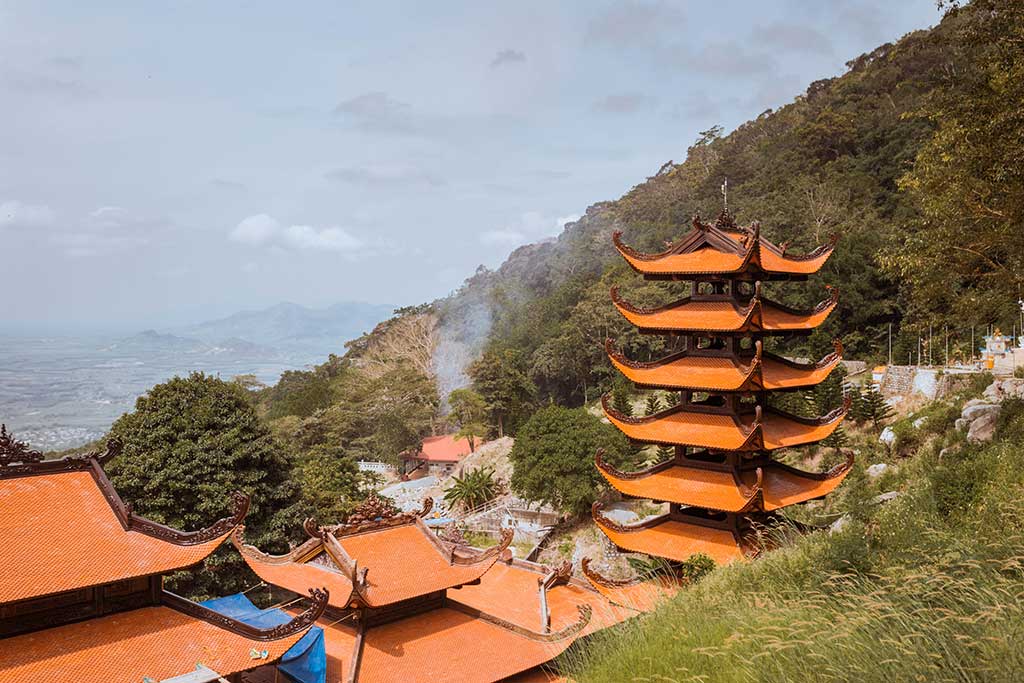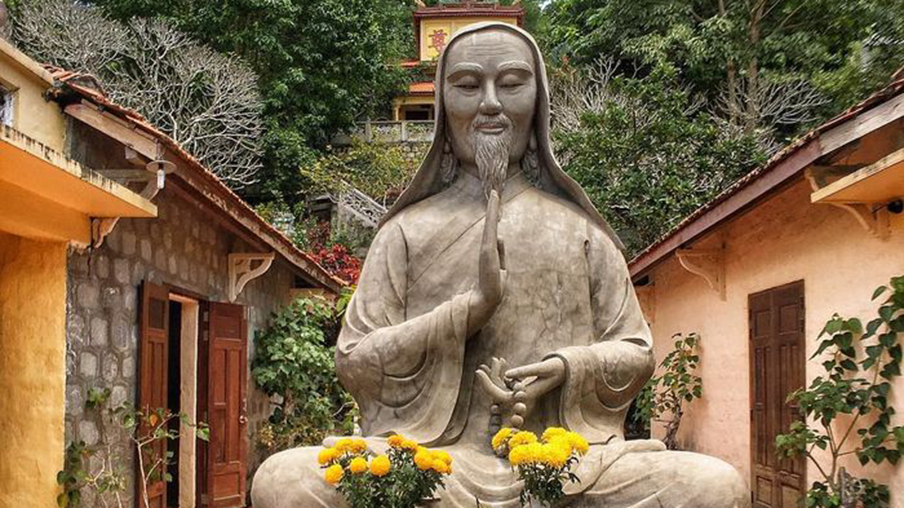Linh Son Truong Tho Pagoda
1. Overview
Linh Sơn Trường Thọ Pagoda, often referred to as Chùa Núi Tà Cú, is one of the most famous and spiritually significant Buddhist temples in Bình Thuận Province. Nestled on Tà Cú Mountain, the pagoda is renowned for its peaceful atmosphere, spectacular mountain scenery, and its enormous reclining Buddha statue—the largest of its kind in Southeast Asia. It is both a sacred pilgrimage site and a unique cultural destination for tourists visiting Mũi Né and Phan Thiết.
2. Location
The pagoda is located on Tà Cú Mountain, in Tân Lập Commune, Hàm Thuận Nam District, Bình Thuận Province. It is about 30 km southwest of Phan Thiết City and roughly 40 km from Mũi Né, making it an ideal day-trip destination for those staying in the coastal area.
Visitors can reach the mountain base by car or motorbike. From there, you can either hike up over 1,000 stone steps or take a modern cable car that offers stunning views of the forest and surrounding landscape.
3. Architecture and Features
The pagoda blends harmoniously with the natural landscape and offers several key highlights:
-
The most remarkable feature is the Reclining Buddha statue, which is 49 meters long and 11 meters high, depicting Buddha entering Nirvana. It is the largest reclining Buddha in Southeast Asia, completed in 1966 after nearly a decade of construction.
-
The main temple buildings are built in traditional Vietnamese style, with curved tile roofs, dragon carvings, and calm courtyards shaded by ancient trees.
-
Smaller meditation halls, shrines, and stupas are scattered along the mountain path, creating a serene and spiritual journey as you explore.
-
The views from the mountaintop offer a panoramic glimpse of the ocean, forests, and distant villages—perfect for both contemplation and photography.
4. Historical Significance
Linh Sơn Trường Thọ Pagoda was established in the 19th century and has long been a center for Buddhist practice in southern Vietnam. Over the years, it has welcomed countless monks, pilgrims, and travelers seeking spiritual growth and inner peace.
The temple is associated with legends of monks meditating in the forest and stories of miraculous protection during storms and wars. Today, it continues to host major Buddhist festivals and attracts visitors from across the country during Tet (Lunar New Year) and Buddha’s Birthday celebrations.
5. How to Visit
To reach the pagoda:
-
Travel to the base of Tà Cú Mountain via Highway 1A (National Road 1A).
-
Choose between hiking up the mountain trail (around 2 hours) or taking the cable car (7–10 minutes) for a scenic ride.
The pagoda is open year-round, with no mandatory entrance fee, though donations are appreciated. Modest dress is required, and visitors should behave respectfully within the temple grounds.
6. Experience and Meaning
Visiting Linh Sơn Trường Thọ Pagoda is not just a sightseeing trip—it is a deeply spiritual and rewarding experience. The mountain’s fresh air, tranquil atmosphere, and the massive image of the Buddha in serene repose evoke a sense of calm and perspective.
For many, climbing the stairs to the temple is a symbolic act of spiritual ascent. Whether you are a Buddhist follower, a nature lover, or a cultural explorer, the visit offers peace of mind, cultural enrichment, and awe-inspiring views.
It is truly a place where the spiritual and the natural world meet—offering blessings, beauty, and a break from the chaos of everyday life.



